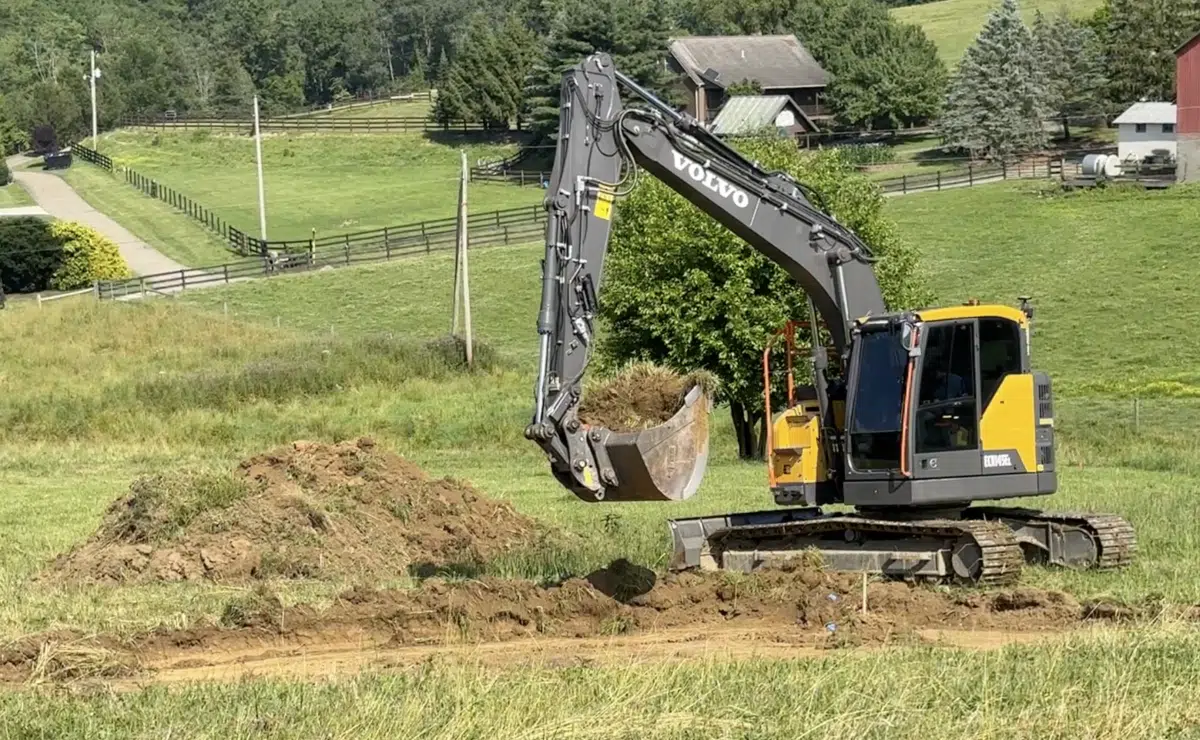words by: Elam Stoltzfus
— PART TWO —
My Father, Elmer, was an Ausbund song leader. During our Sunday church services, he would lead the Amish congregation in song, starting slowly, rolling out the syllables written in the Ausbund in German gothic script. I could feel the music vibrations on the wooden bench as I held the thick song book steady for Dad. As I would look up to observe his face, I would see the underside of his black beard, and watch his lips sound out the German lyrics. I looked around at the congregation, and the peaceful faces of the brothers and sisters of faith fascinated me as they worshipped in song. It was in those moments that the tunes and lyrics of the Ausbund became indelibly imprinted in my memory.
* * * * *
In June of 2018, Nic and I flew to Germany, doing research for our coffee table book: German Lutherans to Pennsylvania Amish: The Stoltzfus Family Story. Although this was the main focus of the trip, I had also made time to visit Passau, where fifty-two of the Ausbund songs were composed in the prison castle in the 1500s.
Before we traveled to Germany, I sent an email to Eva Sattlegger, curator at Oberhaus museum, requesting a visit. I mentioned in the email that I’m from Anabaptist descent, and I understood that in 1535, a group of Anabaptists was held in the dungeon. While there, they composed a collection of hymns that are featured in the Ausbund hymnal, which is still in use by the Amish in America and Canada. When I heard back from Eva, she said, “Sure, come on over. I’ll show you around.”
The Veste Oberhaus Castle is the signature icon of Passau, the “City of Three Rivers.” The castle sits up high on the hill, overlooking the city and the rivers below—the Danube, the Inn, and the Ilz. Every year, thousands of visitors travel to the 13th-century hilltop fortress and museum.
The old town below is known for its baroque architecture and unique charm. This includes the St. Stephen’s Cathedral Catholic church, with its distinctive onion-dome towers and the second-largest pipe organ in the world, which has 17,974 pipes.
On the second day of our time in Passau, Nic and I climbed up the steep hillside walkway to the castle to meet Eva. When we reached the top, we admired the view of the historic city. The large Catholic Church—St. Stephen’s Cathedral—was particularly striking, with its ornate Baroque architecture and onion-dome towers.

Eva was glad to meet us and took us on a tour of the castle. Towards the end of the tour, she took us to the dungeon where they thought the Anabaptists may have been held captive. We followed her as she opened a creaky old metal door leading from the courtyard and descended the stone steps of a tight, winding stairway. We walked through several low, dark doorways and entered a small, stone-lined dungeon. The dark dungeon room measured about twenty-five feet square, with two other rooms attached to it; it had the feeling of an ancient cellar.
I tried to imagine what it was like for the captives; their long days were filled with anxiety, they missed their family and church members, and they faced the fear of death by execution or being burned at the stake. The food was barely sufficient, and the room was small and packed. However, despite these trials, the group composed fifty-two hymns. They were songs of worship and encouragement, a chance to share their experiences and remind each other to remain faithful to their beliefs.
While we were in the dungeon, I was explaining to Eva about the Ausbund. She had more questions, so after we did the tour and went through the museum, we talked for a while. She had so many questions about the Ausbund and its origins. What is happening with it now? Who are the Amish? How is this music being used among the Amish? Who composed the fifty-two songs of the Ausbund in the Veste Oberhaus Castle? She didn’t know a lot about the history of the Ausbund and had all these questions, so I answered the questions with the information I had.
* * * * *
Ausbund (a selection) – Das ist etliche schöne Christenliche Lieder is the oldest Anabaptist hymnal in continuous use. Not only is it used by the Old Order Amish but also by other Anabaptists groups. The first Ausbund was printed in the present-day United States in 1742 in Germantown, PA. From 1922 to 2017, over 350,000 Ausbund hymnals were printed in the United States, and it is currently on its sixty-third edition of printing.
Unlike other hymn books, it does not contain any notes, but the songs are memorized and passed down from generation to generation. This collection of songs composed in the 1500s is not only intended for worship. These songs also include lyrics that speak of tragedy and are poetic renderings reflecting pain, rejoicing, and messages that encourage the singer to remain steadfast in the faith of our forefathers. The poetry, lyrics, and music are an expression of the deep religious belief and sacrificial devotion of Anabaptist believers.
* * * * *
Eva appreciated what I shared with her; I was the first person she had met that had firsthand knowledge about the use and history of the Ausbund among the Amish in America.
She then told me there was a researcher at Passau University who was digging around for more information on the Ausbund, and how it was written. She promised to put me in touch with him. Little did I know at that time how connecting with André Rottgeri would forever change what we know about the Ausbund and its history.
_______________
Elam Stoltzfus currently serves as caretaker of the Nicholas Stoltzfus Homestead in (Berks County) Wyomissing, Pennsylvania. In 2018, he traveled to Germany to document the history of the Stoltzfus family—this research is documented in German Lutherans to Pennsylvania Amish: The Stoltzfus Family Story. To order a copy of this book, you can mail a $30 check to Elam Stoltzfus, 1700 Tulpehocken Road, Wyomissing, PA 19610.




